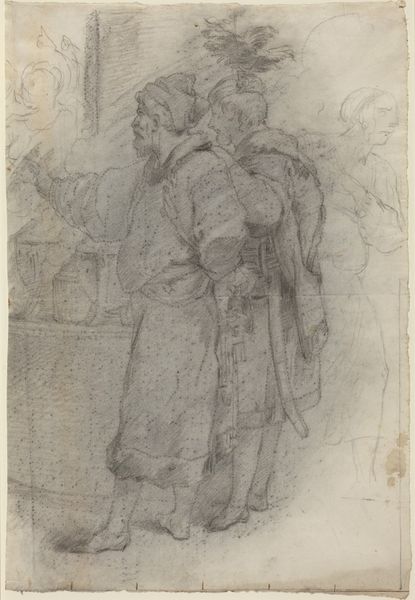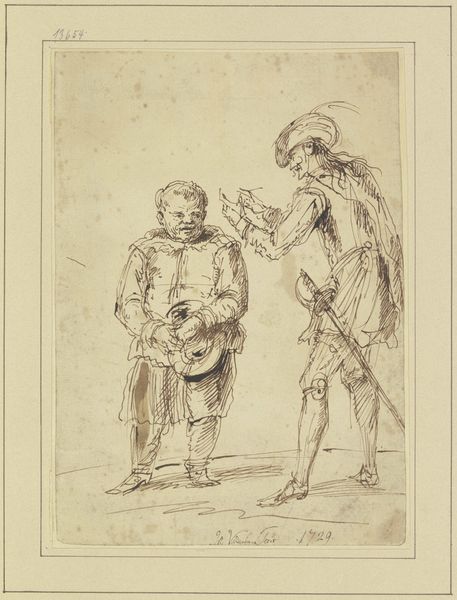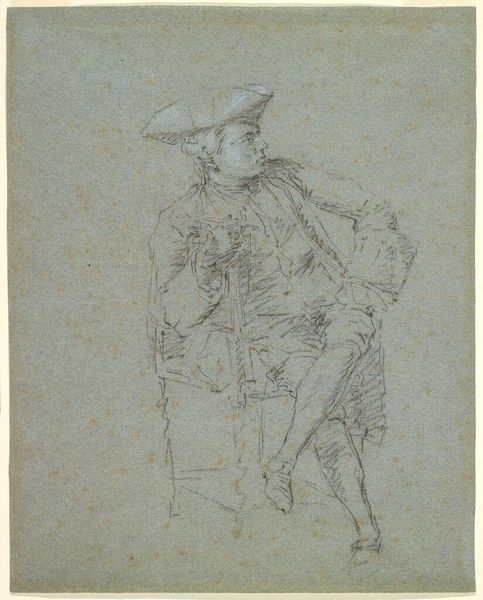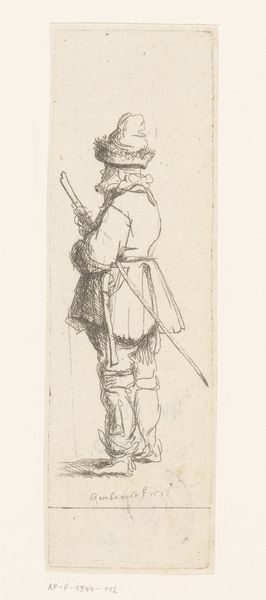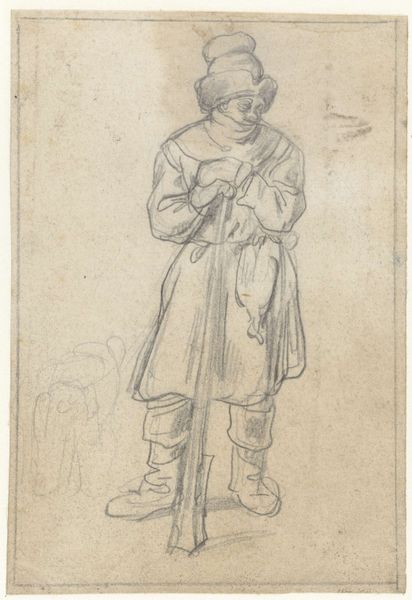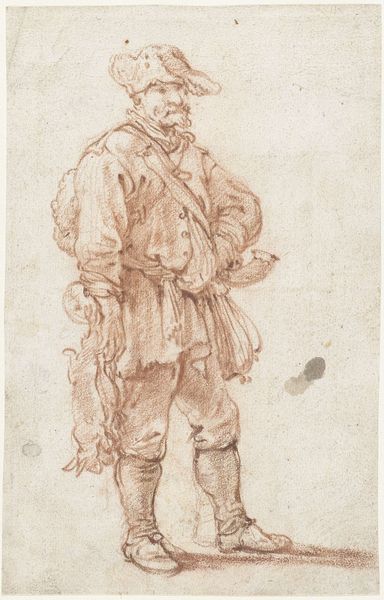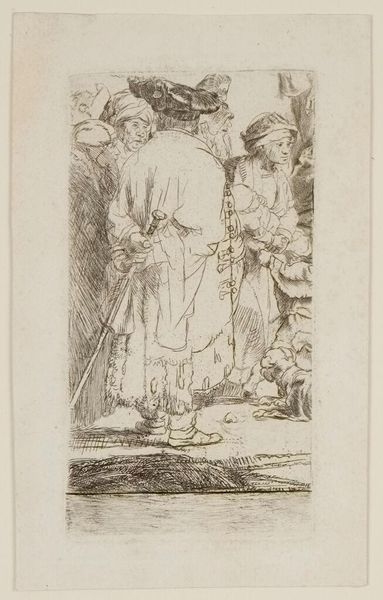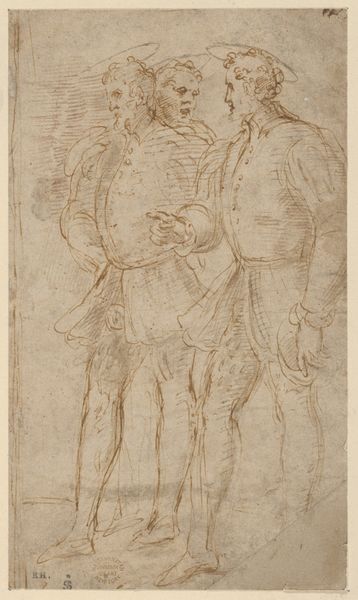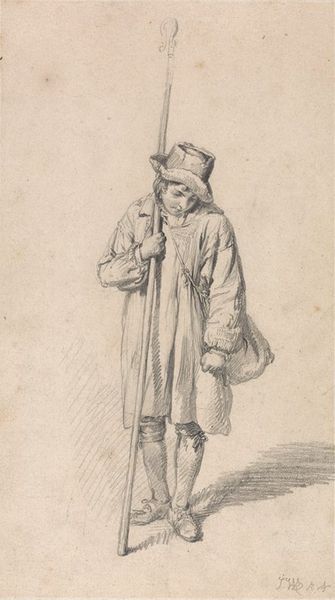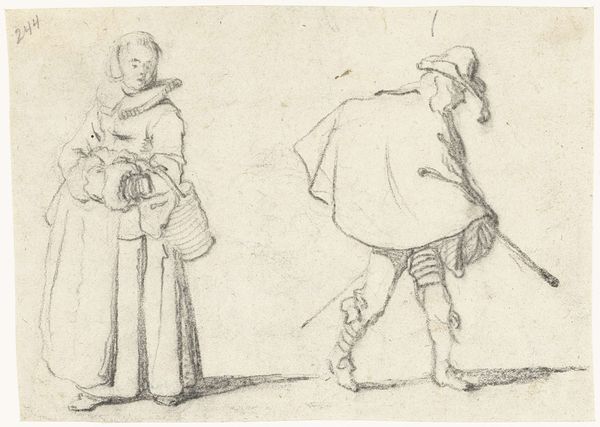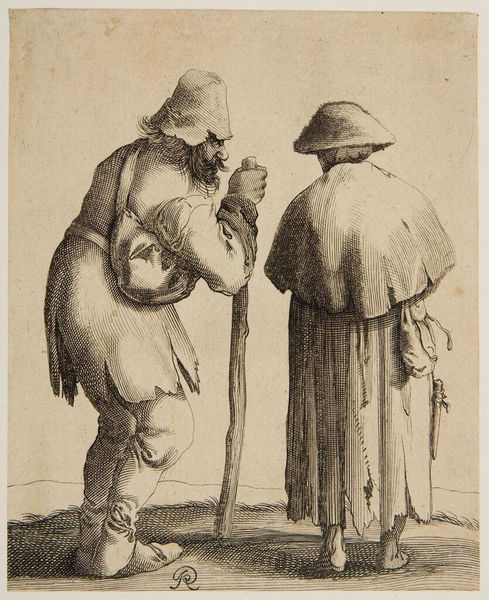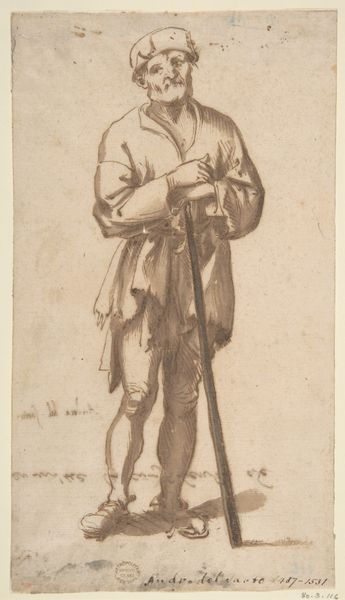
drawing, pencil
#
portrait
#
drawing
#
pencil drawing
#
pencil
#
portrait drawing
#
genre-painting
#
northern-renaissance
Dimensions: 185 mm (height) x 140 mm (width) (bladmaal)
Editor: Here we have "To bønder," or "Two Peasants," a pencil drawing made sometime between 1600 and 1700 by an anonymous artist. I'm immediately struck by the simple dignity in the figures despite, or perhaps because of, the medium used. It feels incredibly raw. What stands out to you about this piece? Curator: Well, considering this drawing, let's focus on its materiality and social context. The artist's choice of pencil, a relatively accessible material even then, is quite telling. Instead of costly paints or elaborate techniques, we have a humble tool used to depict, presumably, common laborers. Does this direct connection to the everyday challenge traditional notions of art for an elite class? Editor: That's a very interesting perspective. It definitely makes me rethink the accessibility of art production at the time. Do you think the anonymity of the artist reinforces the focus on the subject matter – the peasants themselves and their way of life? Curator: Precisely. The lack of a known artist shifts the emphasis from individual genius to the representation of a social class and the work they perform. How does the drawing's existence itself–as an object, regardless of its initial purpose– contribute to our understanding of the means of art production and consumption in that era? Was it a study? A preliminary sketch? Editor: Good questions. I hadn't considered its status as a commodity, either for the artist or subsequent collectors. Perhaps this “low” subject matter rendered in a "low" medium suggests it might not have been intended as "high art." Curator: Exactly. This blurring of boundaries is what interests me. It makes you question the artist's intent and the audience they imagined. Did they see the inherent value in these figures? How does it invite us to reconsider the relationship between labor, art, and social hierarchy? Editor: I see what you mean. Thinking about the drawing this way reveals a complex interplay of social dynamics, materials, and artistic intention, even with something as simple as a pencil drawing. Thanks for opening my eyes to it! Curator: My pleasure. Remember to look beyond the surface and consider the hands that created it, and the social conditions that made its creation possible.
Comments
No comments
Be the first to comment and join the conversation on the ultimate creative platform.
